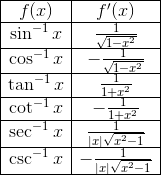Gather round, Magooshers. It’s story time. During the first two weeks of 2016, America’s adults were obsessed with winning the lottery. You see, the jackpot had grown to $1,600,000,000. People (including yours truly) were lining up around the block to buy a ticket. For me, spending $2 on a ticket was an excuse to daydream, and nothing more. I knew the odds: 175,000,000 to 1. No one had statistical probability on their side, yet a few people walked away multi-millionaires.

From playing the lottery to rush hour traffic jams, statistics govern our lives. This branch of math is wholly unique, providing students with a new way to look at the world. If you, too, want to understand the mysteries hidden in the data all around us, AP Statistics is the class for you.
In this article I will go over the ins and outs of the AP Statistics Exam. If you get to the end and still have questions, be sure to check out the official College Board website for AP Statistics.
Note: This article accounts for the latest revisions to AP Statistics (Fall 2010). Students studying for the AP Statistics Exam should only reference study materials published after this date.
How You’re Assessed on the Exam
AP Statistics is a math class different from any you have ever taken, so there is a lot to learn. Below is the course’s Topic Outline. Included is each topic’s percentage weight on the AP Statistics Exam, along with a few of the learning objectives. In no way is this a comprehensive study guide, but a preview of what you will encounter in the course and on the exam.
- Exploring Data: Describing patterns and departures from patterns (20%-30%)
- Making/interpreting displays of data
- Summarizing data
- Sampling and Experimentation: Planning and conducting a study (10%-15%)
- Methods of data collection
- Planning and conducting experiments
- Anticipating Patterns: Exploring random phenomena using probability and simulation (20%-30%)
- Probability
- Variables
- Statistical Inference: Estimating population parameters and testing hypotheses (30%-40%)
- Estimation
- Tests of significance
Note: One advantage you have on exam day is that all formulas and probability tables are given to you. Yep, the days of memorization are long gone.
Successful Time Management
In this section, I will break down the length of the AP Statistics Exam, and offer suggestions on how to make sure you successfully finish each section. As you practice, I highly recommend you take as many timed practice exams as you can to become used to format, content, and pacing. For students with a College Board account a full-length practice exam is available for you to take right now.
Section I: Multiple Choice (40 Questions, 90 Minutes, 50% of Exam Score)
Okay, after doing some non-statistical math, we discover that you have two minutes and 15 seconds to answer each multiple choice question. To finish on time, you need to complete four questions every nine minutes.
After taking your first practice test, you discover that the multiple choice section is full of word problems. Word problems take time, so have your pencil ready to underline/circle key information in each passage. Doing this will save precious seconds as you begin to plug information into equations.
If you’re taking AP Statistics, I bet you’ve already taken your fair share of high-stakes standardized tests. Even so, check out my article on ACT Time Management. The article goes over some simple tips and tricks that you can’t afford to miss on exam day.
Another thing to remember is that like all AP Exams, AP Statistics does not penalize for guessing. That’s right; no points are deducted for incorrect answers. Why is that a good thing for you? Well, if there is a question or two where you get stuck, there is no shame in guessing and moving on. Just don’t leave any questions blank!
Break (10 Minutes)
Break is an important time during any AP Exam. But for a three-hour test like the AP Statistics Exam, you’re only at the halfway mark. Go to the bathroom, drink a little water, and don’t forget to eat something. You’re going to need some fuel to finish strong.
Section II: Free Response (5 Questions, 1 Investigative Task, 90 Minutes, 50% of Exam Score)
In the Free Response section, AP recommends that you spend 12 minutes completing each question and 30 minutes completing the Investigative Task.
Like many STEM AP Exams, Section II on the AP Statistics Exam has a series of tasks contained in each question. In other words, each question will have a part a, b, c, etc. Each task represents a chunk of your time. To keep a handle on time management, count the number of tasks you are required to do at the beginning of Section II. That way you know the exact amount of time you can dedicate to each task.
Another thing to remember before you go jumping into practice tests is that a graphing calculator is required. Make sure it’s a calculator you’re comfortable with. The more comfortable you are with your calculator, there’s less of a chance of it slowing you down (or you making a mistake on it) on test day.
Section II Pro-Tip: If you’ve taken multiple timed practice tests, and are comfortable with time management, try to squeeze in the last 2-3 minutes to review what you wrote. Even if the correct answer is in your mind, exam stress might cause you to leave out important information in your replies. If you have time to catch these mistakes, you can fix them.
Test Content: Section I (Multiple Choice)
Because the exam hasn’t changed in over five years, many multiple choice questions from previous years’ AP Statistics Exams are still a valid way to practice for test day. You will likely see old (but still relevant) exam questions on your tests throughout the year.
The multiple-choice questions will test your Statistics knowledge in many different ways. All the questions are ‘stand alone,’ meaning there are no groups of questions focused on a set of data or chart. Even so, each question will ask you apply multiple skills that you developed during AP Statistics. Take time to read the question first before examining the graph/data set.
Test Content: Section II (Free Response)
Like many of the questions on the multiple-choice section, to answer the Free Response questions, you need to analyze data in the form of text, charts, graphs, or graphics.
Let’s say, for example, the questions represent 12 tasks (parts). That means you have 7.5 minutes to complete each task. To write your best replies, consider trying the following strategy when you tackle a practice AP Statistics Exam:
- 4 minutes: Plan out your reply.
- Time to calculate! Use the margins of your test booklet as scratch paper. Remember, all the test readers what to see is the answer!
- 3 minutes: Write your reply.
- The only thing that matters is that you a) answer the question and b) follow the directions.
- If you take multiple practice tests, the act of writing answers under pressure will become second nature, something that doesn’t take up a lot of brain power compared to the questions themselves.
- The only thing that matters is that you a) answer the question and b) follow the directions.
The End
AP Statistics is a course typically taken by 12th grade students. After the exam is over, you will get caught up in graduation and the transition to college. In the midst of this transition…
The College Board will release AP Statistics scores in early July.
Yep, one day in the middle of summer you’ll get an email saying that your scores are ready on your College Board account. For those of you that earn a 5, congratulations. You definitely just earned yourself some college credit. 4s are a bit tricky. Some colleges accept them. Some don’t.
“But,” you may ask. “I earned a 4. Why wouldn’t my top choice colleges accept 4s?” Take it from me, someone who barely passed Calculus in college, math is hard, really hard. While some top colleges do allow students with 4s to place into higher-level classes, many don’t. Just so there are no surprises, check with colleges about their AP score policies long before exam day.
But hey, there are certain advantages to retaking statistics in college. First of all, it’s a good time to ‘fill in the gaps’ in your statistics knowledge. Also, coming into Statistics 101 with a foundation of knowledge is a great thing. The experience will be less stressful for you than for students who did not take AP Statistics in high school. Take it from me, freshman year is already stressful enough. Why complicate things?
AP Statistics is a challenging course. Yet that doesn’t mean the exam is impossible. If you pay attention in class, study (a lot), and take a few practice tests, come test day the odds will be in your favor.
Till next time, Magooshers.





Leave a Reply